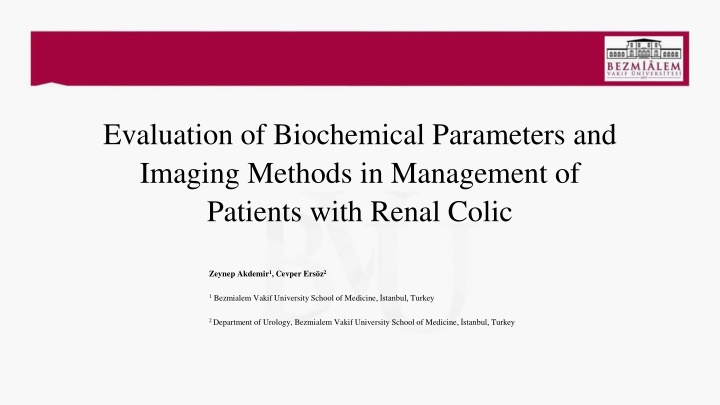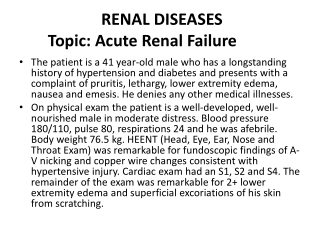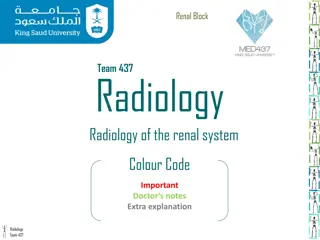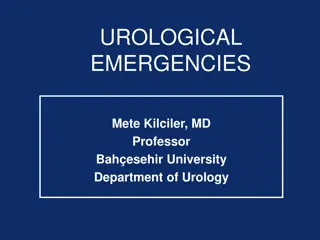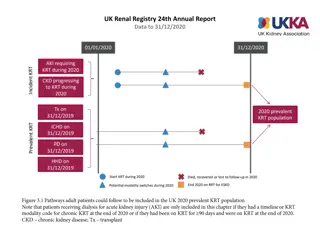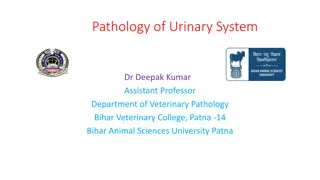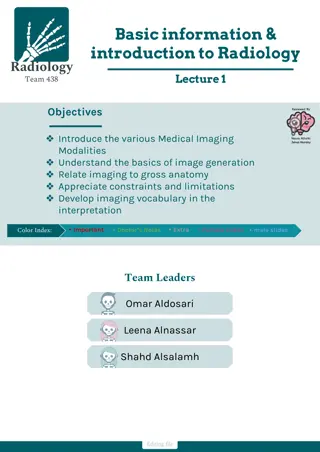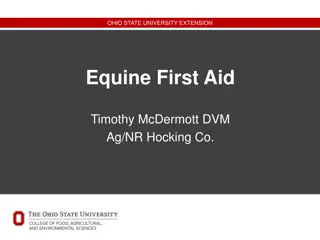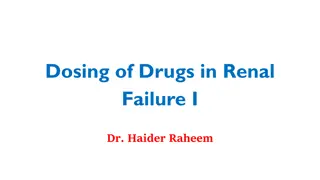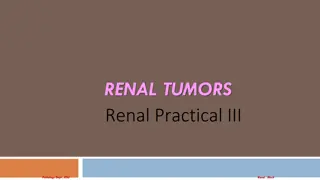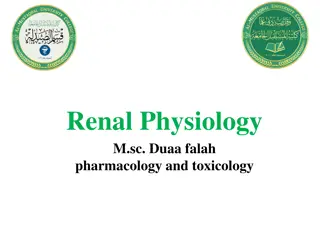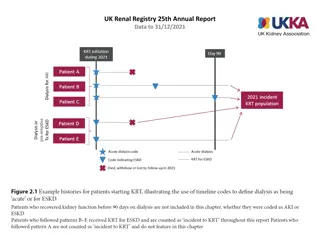Management of Acute Renal Colic: Evaluation of Parameters and Imaging Methods
Acute renal colic causes sudden severe pain due to urinary obstruction. This study evaluates biochemical parameters and imaging methods in managing patients with renal colic. The correlation between biochemical changes and imaging results is discussed, highlighting the role of imaging in follow-up care. Findings show a predominance of male patients and focus on the impact of computed tomography in diagnosis and management.
Download Presentation

Please find below an Image/Link to download the presentation.
The content on the website is provided AS IS for your information and personal use only. It may not be sold, licensed, or shared on other websites without obtaining consent from the author.If you encounter any issues during the download, it is possible that the publisher has removed the file from their server.
You are allowed to download the files provided on this website for personal or commercial use, subject to the condition that they are used lawfully. All files are the property of their respective owners.
The content on the website is provided AS IS for your information and personal use only. It may not be sold, licensed, or shared on other websites without obtaining consent from the author.
E N D
Presentation Transcript
Evaluation of Biochemical Parameters and Imaging Methods in Management of Patients with Renal Colic Zeynep Akdemir1, Cevper Ers z2 1 Bezmialem Vakif University School of Medicine, stanbul, Turkey 2 Department of Urology, Bezmialem Vakif University School of Medicine, stanbul, Turkey
Introduction Acute renal colic which is one of the common causes of emergency admissions is the sudden onset of blunt and agonizing pain localized in the costovertebral angle, lateral of the sacrospinous muscle and below the 12th rib due to urinary system obstruction and/or inflammation. In the diagnosis of renal colic, imaging methods (USG, radiography of the urinary tract, CT) are used after taking anamnesis and physical examination. Changes in biochemical parameters (urea, creatinine) of patients are often expected. Repetitive CT scans have some disadvantages in terms of both the radiation to which the patient will be exposed and the financial burden to the health system.
Method Patients who presented with acute renal colic, had imaging results and had ureteral stones in Bezmialem Vak f University Hospital Emergency Service between July 2016 and March 2020 was included in the study. The results of the laboratory (creatinine) and imaging (USG, radiography of the urinary tract, CT) at the time of first admission with the acute symptoms recorded in the electronic health record of the patients were compared with the imaging results on re-admission to the outpatient clinic.
Method The correlation of biochemical changes with the imaging results obtained during and after stone dropping of patients whose acute renal colic symptoms disappeared during follow-up were valuated, and the place of computed tomography in follow-up was evaluated. The discharge of patients with improved symptoms and laboratory values without computed tomography and other imaging methods were retrospectively investigated. The study was conducted with 62 people.
Inclusion criteria: Exclusion criteria: Being in the ICD10-N20 diagnostic code with kidney and ureter stone group Imaging was performed at the first application and follow-up of the patient. An age range of 18-80 To have the biochemical parameters examined at the first application and follow-up of the patient. The patient has been evaluated by the urology outpatient department, Patients who have had kidney stone surgery before Patients <18 and> 80 years old Patients with Chronic Renal Failure Being pregnant
Results 61% of the patients in the study were men and 39% were women. The average age of the patients is 44.62 years. Considering the mean differences between first time creatinine and control creatinine measurements, a statistically significant difference was found between them (p<0,001). The median value of first arrival creatinine (0,80-1,25) is 0.20 units higher than the median value of control creatinine (0,71-0,93). 38 40 CONTROL CREATININE 62 35 CREATININE 62 N Valid 30 Mean 1,0682 0,8144 24 25 Std. Deviation 0,36392 0,15303 20 Minimum 0,60 0,50 15 Maximum 2,52 1,30 10 Percentiles 25(Q1) 0,8000 0,7100 5 50(Medyan) 1,0100 0,7950 75(Q3) 1,2525 0,9325 0 Male Female
Conclusion The results of the present study show that follow-up of renal colic patients with biochemical parameters is as significant as follow- up with imaging methods. It is possible for patients to be discharged by looking at their creatinine values.
References Alabousi, A., Patlas, M. N., Mellnick, V., Chernyak, V., Farshait, N., & Katz, D. S. (2019). Renal Colic Imaging: Myths, Recent Trends, and Controversies. Canadian Association of Radiologists Journal, 70(2), 164-171. Gershan, V., Homayounieh, F., Singh, R., Avramova-Cholakova, S., Faj, D., Georgiev, E., ... & Kharuzhyk, S. (2020). CT protocols and radiation doses for hematuria and urinary stones: Comparing practices in 20 countries. European Journal of Radiology, 108923. Hall, T. C., Stephenson, J. A., Rangaraj, A., Mulcahy, K., & Rajesh, A. (2015). Imaging protocol for suspected ureteric calculi in patients presenting to the emergency department. Clinical radiology, 70(3), 243-247.
